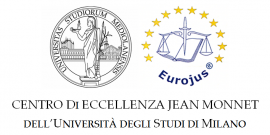The residence document criterion in the revised Dublin system, today, between EU secondary law and the jurisprudence of the Court of Justice
Abstract
In May 2024, the Commission approved the new Pact on Migration and Asylum (“Pact”) abolishing the previous Regulation No. 2013/604 (“DR”). The new Regulation No. 2024/1351 (“RAMM”) retains the DR criteria, including the “residence document” criterion under Article 29 RAMM. The Court of Justice (“CJ”) interpreted the meaning of “residence document” for the first time in the E and S judgment, under Article 2(l) DR, addressing whether diplomatic cards issued under the Vienna Convention on Diplomatic Relations (“VCDR”) could be included. However, neither the CJ jurisprudence nor the 2024 legislator defined the constitutive elements of “residence document(s).” This study argues that the broad notion of “residence document” will likely lead to preliminary references concerning Article 29 RAMM. In the light of the E and S judgment, the article will dell on the 2024 legislator’s intent, and the CJ’s jurisprudence and the ongoing doctrinal debates in European asylum law.
To read the full article click here
La Commissione, con l’approvazione del nuovo Patto su Migrazione e Asilo (“Patto”), ha abrogato il precedente Regolamento n. 604/2013. Il nuovo Regolamento n. 1351/2024 (Reg24) prevede all’art. 29 Reg24 il criterio di “documento di residenza” conformemente a quanto previsto finora. Tenuto conto dell’attuale quadro normativo, l’articolo si concentra sulla nozione di “documento di residenza” per come interpretata dalla Corte di Giustizia nella sentenza E e S. Il contributo argomenta che né la pronuncia E e S né il l’art. 29 Reg24 individuano gli elementi costitutivi di tale documento. Nella consapevolezza che tali silenzi saranno oggetto di delucidazioni in futuri procedimenti pregiudiziali, l’articolo tenta di chiarire l’intento del legislatore del 2024, individua le maggiori criticità della sentenza E e S e della giurisprudenza della CG in questa materia. Il lavoro propone, da ultimo, possibili alternative alla regola del paese di primo ingresso prendendo in considerazione i principali dibattiti dottrinali.
Per leggere l’articolo completo clicca qui
ARTICOLI CORRELATI
Per tag
Per data
| L | M | M | G | V | S | D |
|---|---|---|---|---|---|---|
| « Lug | ||||||
| 1 | ||||||
| 2 | 3 | 4 | 5 | 6 | 7 | 8 |
| 9 | 10 | 11 | 12 | 13 | 14 | 15 |
| 16 | 17 | 18 | 19 | 20 | 21 | 22 |
| 23 | 24 | 25 | 26 | 27 | 28 | 29 |
| 30 | ||||||


